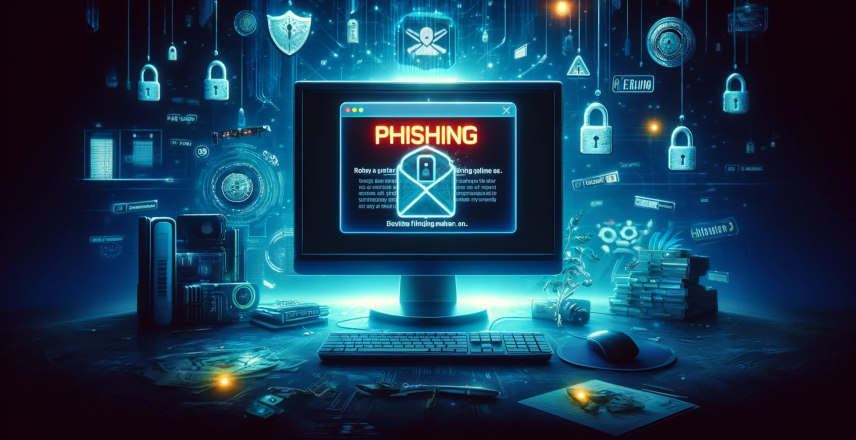In today's digital age, the threat of phishing attacks looms large, posing significant risks to individuals and organizations worldwide. Phishing is a form of cybercrime that relies on social engineering tactics to deceive individuals into disclosing sensitive information and remains one of the most prevalent and effective methods used by cybercriminals. From stealing personal data to compromising corporate networks, phishing attacks can have far-reaching consequences. However, with awareness, education, and proactive measures, individuals and organizations can effectively combat phishing threats and enhance their cybersecurity posture.
The Cybersecurity and Infrastructure Security Agency (CISA) states that more than 90% of successful cyber attacks start with a phishing email. This high success rate, combined with the relatively low cost of conducting such attacks, ensures that phishing remains a preferred method for many cybercriminals. Effective countermeasures require a blend of comprehensive training, robust technical defenses, and a culture of security awareness within organizations to mitigate these threats.
If you haven’t already hyper-focused your attention on phishing, now is the time. Let's delve further into understanding phishing and explore ways to mitigate its risks:
Understanding Phishing
Phishing attacks typically involve the use of fraudulent emails, text messages, or websites that mimic legitimate entities, such as banks, social media platforms, or government agencies. These deceptive communications often contain urgent appeals or enticing offers designed to prompt recipients to take action, such as clicking on malicious links, downloading attachments, or divulging confidential information like usernames, passwords, or financial details. Once successful, phishing attacks can lead to identity theft, financial fraud, malware infections, or unauthorized access to sensitive data.
Recognizing Phishing Indicators
Identifying phishing attempts requires a keen eye for suspicious signs and behavioral cues. Common indicators of phishing emails or messages include:
- Urgency or Fear Tactics: Phishing emails often create a sense of urgency or fear to compel recipients to act hastily, such as threatening to suspend accounts or warning of impending consequences if action is not taken immediately.
- Unsolicited Requests for Information: Legitimate organizations typically do not request sensitive information via email, especially unsolicited. Be wary of emails asking for passwords, Social Security numbers, or financial details.
- Mismatched URLs or Poor Grammar: Phishing emails often contain spelling or grammatical errors, as well as deceptive URLs that mimic legitimate websites. Check email addresses and hyperlinks carefully for inconsistencies.
- Unusual Sender Addresses: Verify the sender's email address to ensure it matches the purported organization. Cybercriminals may use spoofed or slightly altered email addresses to deceive recipients.
Mitigating Phishing Risks
To mitigate the risks associated with phishing attacks, individuals and organizations can adopt proactive measures and cybersecurity best practices:
- Security Awareness Training: Educate employees, stakeholders, and end-users about the dangers of phishing and how to recognize suspicious communications. Conduct regular training sessions and phishing simulations to reinforce security awareness and empower individuals to make informed decisions.
- Implement Email Filtering and Anti-Phishing Solutions: Deploy email filtering solutions that can detect and block phishing emails before they reach recipients' inboxes. Anti-phishing tools utilize machine learning algorithms and threat intelligence to identify malicious content and URLs, providing an additional layer of defense against phishing attacks.
- Enable Multi-Factor Authentication (MFA): Implement multi-factor authentication mechanisms to add an extra layer of security beyond passwords. MFA requires users to provide additional verification factors, such as one-time codes sent via SMS or authentication apps, reducing the risk of unauthorized account access in the event of credential theft.
- Regularly Update Software and Systems: Keep software applications, operating systems, and security tools up to date with the latest patches and security updates. Vulnerabilities in outdated software can be exploited by cybercriminals to deliver malware or execute phishing attacks.
- Encourage Vigilance and Reporting: Encourage a culture of cybersecurity awareness and vigilance within your organization. Encourage employees to report suspicious emails or messages promptly and provide clear channels for reporting incidents to the IT or security team for investigation.
- Monitor and Analyze Threat Intelligence: Stay informed about emerging phishing trends, tactics, and indicators of compromise by monitoring threat intelligence feeds and security advisories. Analyzing phishing trends can help organizations proactively adjust their security controls and defenses to mitigate evolving threats.
Conclusion
Phishing attacks continue to pose significant challenges to cybersecurity, exploiting human vulnerabilities and technological weaknesses to infiltrate networks and steal sensitive information. However, by raising awareness, implementing robust security measures, and fostering a culture of vigilance, individuals and organizations can effectively defend against phishing threats and safeguard their digital assets. Through proactive education, training, and collaboration, we can collectively mitigate the risks posed by phishing attacks and build a more resilient cybersecurity ecosystem. Stay vigilant, stay informed, and always do your best to stay secure.







